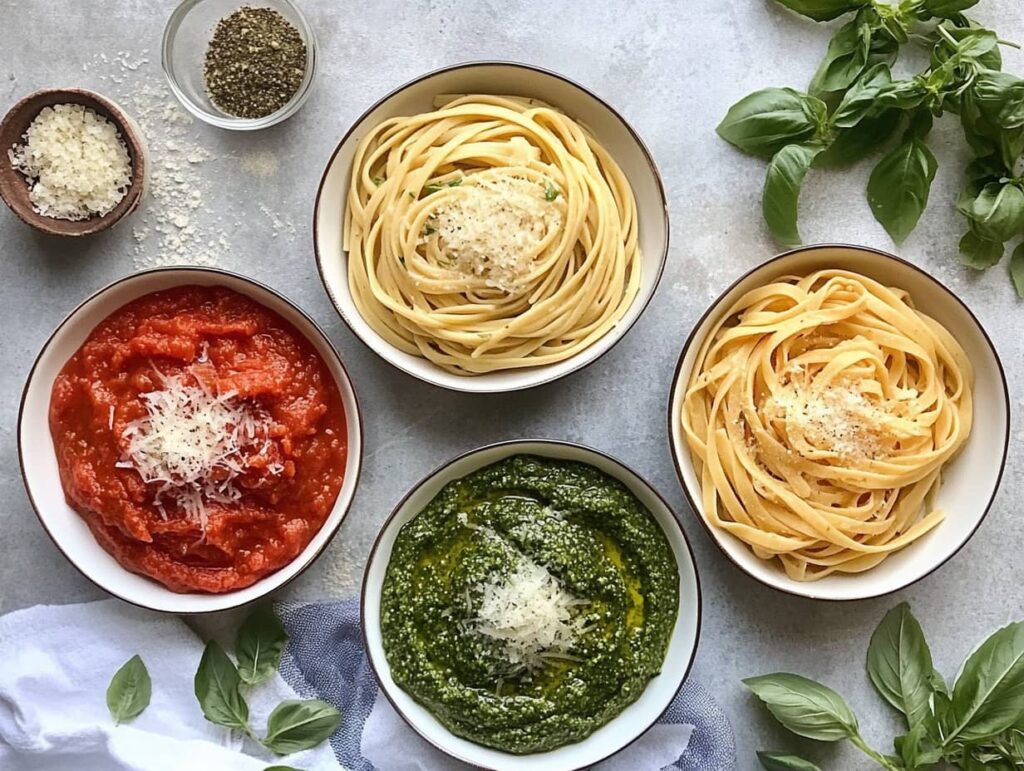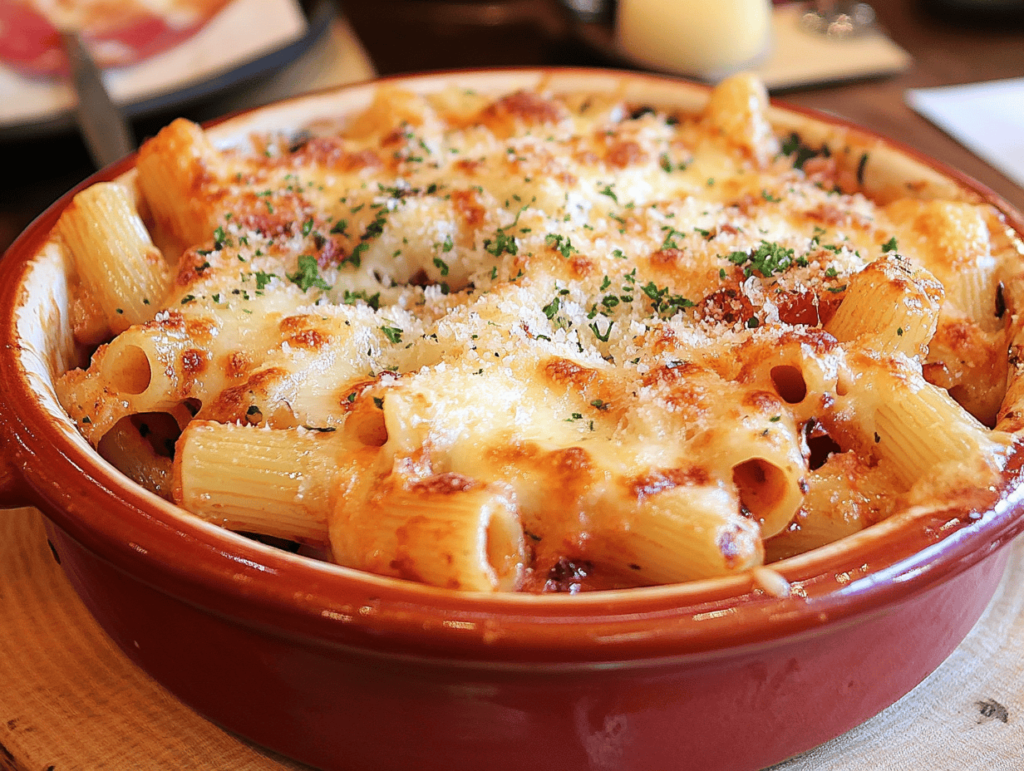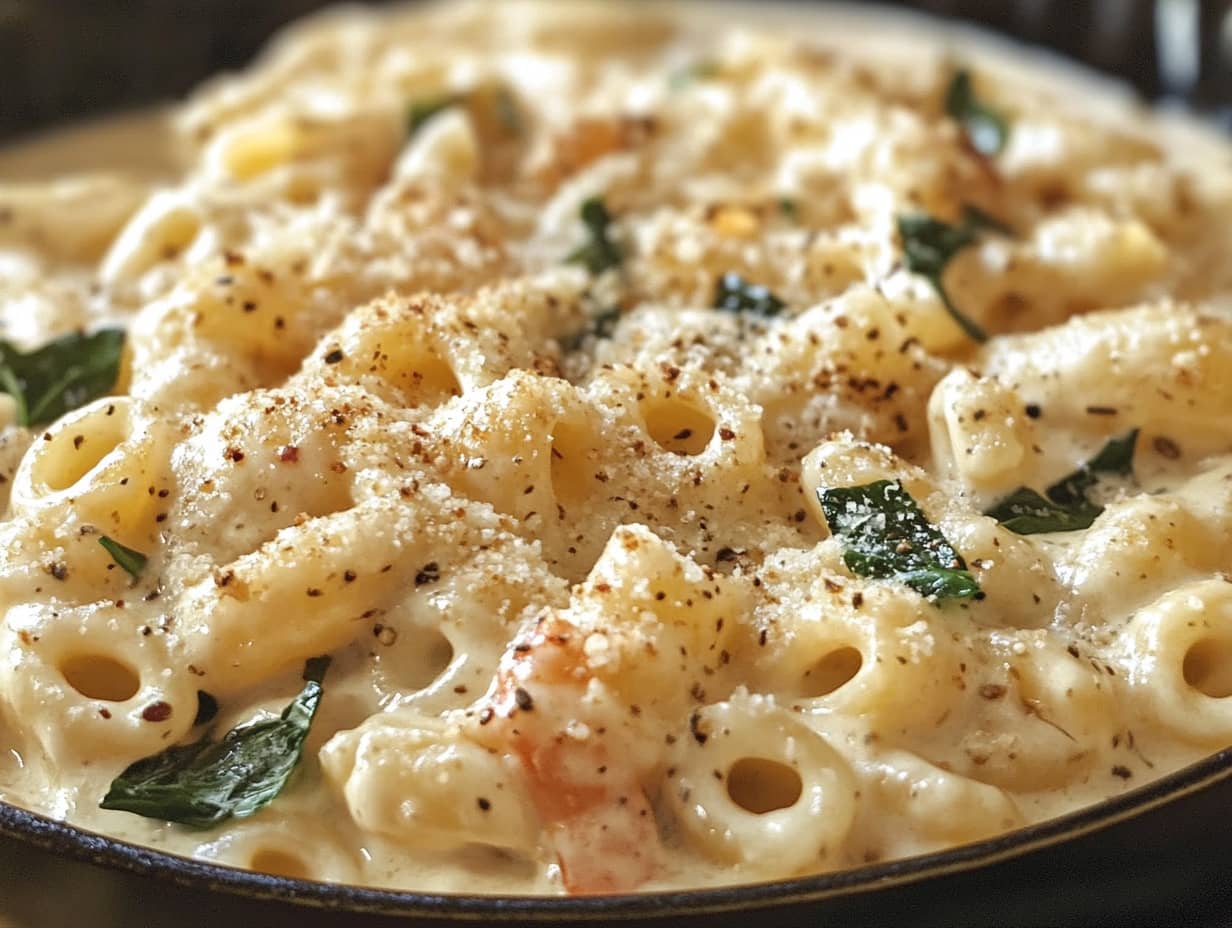Lumache pasta is more than just another type of noodle—it’s a culinary treasure. Shaped like small snail shells, this pasta is not only fun to eat but also incredibly versatile. Its unique design makes it perfect for holding sauces, which means every bite is packed with flavor.
Whether you’re a pasta enthusiast or a curious beginner, this guide will walk you through everything you need to know about lumache pasta. From its history and cooking tips to creative recipes and sauce pairings, you’ll discover how to turn this pasta into a delicious masterpiece.
The History and Cultural Significance of Lumache Pasta
Lumache pasta gets its name from the Italian word “lumache,” which means snails. This isn’t because it’s made with snails but because its unique shape resembles a snail’s shell. This pasta shape has deep roots in Italian cuisine and reflects the creativity and practicality of traditional pasta-making.
A Symbol of Italian Ingenuity
The origins of lumache pasta can be traced back to regions in Italy where pasta was a staple of everyday meals. The snail-shaped design wasn’t chosen by accident—it was created to hold rich, flavorful sauces, ensuring no drop went to waste. This practical shape made lumache pasta popular among families who valued both taste and efficiency.
Regional Variations
Different parts of Italy adopted lumache pasta and paired it with their local flavors. In southern Italy, it’s commonly paired with hearty tomato-based sauces. Meanwhile, in northern Italy, you might find lumache served with creamy sauces or even baked in casseroles.
A Modern Classic
Today, lumache pasta is a favorite worldwide. Its playful shape and versatility have made it a go-to choice for both traditional Italian recipes and modern creations. Whether you find it at a local Italian restaurant or your neighborhood grocery store, lumache pasta has become a symbol of how food can connect cultures and bring joy to the table.
Why Lumache Pasta Remains Popular
- Adaptability: It works well with nearly any type of sauce.
- Flavor retention: Its shell-like design captures sauces, making every bite delicious.
- Visual appeal: The unique shape adds a fun, whimsical touch to meals.
Lumache pasta is more than a food; it’s a piece of history and a staple in the art of Italian cooking.
Characteristics of Lumache Pasta :

What Makes Lumache Pasta Unique?
Lumache pasta stands out among other pasta types thanks to its distinctive shape and texture. Unlike flat or straight pasta, lumache is designed with a curved, hollow structure resembling a snail shell. This shape isn’t just for show—it plays an important role in how the pasta is cooked and enjoyed.
The Shape and Its Purpose
Lumache pasta’s shell-like form makes it perfect for holding onto sauces, fillings, and seasonings. The hollow interior traps thick sauces, creamy mixtures, or small pieces of vegetables and meats, ensuring every bite is packed with flavor. Its ridged surface also helps sauces cling, making it a versatile choice for different types of dishes.
- Curved and Hollow: The hollow space inside holds fillings and sauces effortlessly.
- Ridged Surface: Adds texture and helps sauce stick better to the pasta.
- Small to Medium Size: Makes it ideal for soups, casseroles, and main dishes.
Texture and Cooking Quality
Lumache pasta is usually made from durum wheat, a type of hard wheat known for its high protein content. This gives the pasta a firm and chewy texture, even after cooking. The ridges add a subtle bite, making it enjoyable to eat and perfect for both creamy and chunky sauces.
How Lumache Differs from Other Pasta Shapes
- Compared to Penne: While penne is tubular and straight, lumache is curved and more compact, ideal for trapping sauces.
- Compared to Shell Pasta: Shell pasta (conchiglie) is larger and thinner, while lumache is thicker and holds its shape better during cooking.
- Compared to Macaroni: Macaroni is smaller and smoother, whereas lumache is larger with ridges, making it more versatile.
Why the Shape Matters in Cooking
- For Thick Sauces: The hollow design captures creamy or chunky sauces like Alfredo or Bolognese.
- For Baked Dishes: Lumache holds up well under high heat and pairs beautifully with melted cheese in baked casseroles.
- For Soups and Stews: Its size and sturdiness make it an excellent addition to hearty soups.
Perfect for All Occasions
Lumache pasta isn’t just delicious; it’s also a great choice for any meal. Whether you’re preparing a casual family dinner or hosting a special gathering, this pasta is sure to impress with its taste and appearance.
How to Cook Lumache Pasta
| Step | Measurement/Instruction |
|---|---|
| Pasta Amount | 400 grams (14 ounces) – serves 4 people |
| Water | 4 liters (1 gallon) |
| Salt for Boiling | 2 tablespoons |
| Cooking Time | 10–12 minutes (check package for exact time; cook to al dente) |
| Reserved Pasta Water | 1 cup (240 ml) |
| Sauce | 2–3 cups (depending on the recipe) |
| Optional Garnish | Fresh Parmesan, basil, or olive oil for serving |
Instructions:
| Step | Details |
|---|---|
| Boil Water | Bring 4 liters (1 gallon) of water to a rolling boil in a large pot. |
| Salt the Water | Add 2 tablespoons of salt to the boiling water. |
| Add Pasta | Add 400 grams of lumache pasta and stir immediately to prevent sticking. |
| Cook Pasta | Boil for 10–12 minutes (taste at 10 minutes for al dente texture). |
| Reserve Water | Scoop out 1 cup (240 ml) of pasta water before draining. |
| Drain Pasta | Drain using a colander; do not rinse unless making a cold pasta dish. |
| Combine with Sauce | Mix hot pasta with 2–3 cups of sauce, using reserved water to adjust consistency if needed. |
| Serve | Garnish with Parmesan, basil, or olive oil, and serve immediately. |
Best Sauces for Lumache Pasta

Lumache pasta’s unique shape makes it an excellent choice for holding onto thick, flavorful sauces. Whether you prefer creamy, tomato-based, or pesto sauces, lumache’s ridges and hollow interior ensure that every bite is packed with flavor. Here are some of the best sauces to pair with this versatile pasta:
| Type of Sauce | Description | Why It Works with Lumache |
|---|---|---|
| Creamy Alfredo Sauce | A rich and velvety sauce made with butter, heavy cream, garlic, and Parmesan cheese. | The thick, creamy texture clings perfectly to lumache’s ridged surface and hollow shape. |
| Hearty Bolognese Sauce | A slow-cooked meat sauce made with ground beef, pork, tomatoes, and aromatic herbs. | The chunks of meat get trapped inside the pasta, making every bite full of flavor. |
| Classic Marinara Sauce | A light and tangy tomato-based sauce seasoned with garlic, basil, and oregano. | The simplicity highlights the pasta’s texture while coating it evenly. |
| Pesto Genovese | A vibrant, nutty sauce made with fresh basil, Parmesan, pine nuts, garlic, and olive oil. | Pesto’s smooth consistency clings to the ridges, adding bursts of fresh, herby flavor. |
| Cheese Sauce | A creamy blend of melted cheeses like cheddar, Gouda, and Parmesan. | The gooey sauce fills the pasta’s hollow interior, creating a cheesy delight in every bite. |
| Ragu Sauce | A meat-based sauce similar to Bolognese, with a slightly chunkier texture. | The meaty pieces fit perfectly into the pasta, enhancing its chewiness. |
| Vegetable Primavera | A medley of sautéed vegetables like zucchini, bell peppers, and onions, tossed in olive oil or light tomato sauce. | The vegetables get caught in the pasta, creating a fresh and colorful dish. |
Tips for Choosing the Best Sauce
- Thicker Sauces Work Best: Lumache’s shape is ideal for thick, chunky sauces that can fill its hollow interior.
- Experiment with Add-Ins: Fresh herbs, roasted vegetables, and proteins like chicken or sausage elevate the dish.
- Balance the Flavors: Pair rich sauces like Alfredo with lighter sides or fresh ingredients to avoid overwhelming the palate.
These sauce pairings are just the beginning of what you can do with lumache pasta. Its versatility allows you to experiment and create your own signature dishes.
Creative recipes :
| Recipe Name | Ingredients | Instructions |
|---|---|---|
| Baked Lumache with Cheese and Spinach | 400 g lumache, 2 cups marinara, 2 cups mozzarella, 1 cup ricotta, 1 cup spinach, 1/2 cup Parmesan, 1 tsp Italian seasoning, salt & pepper | Preheat oven to 180°C (350°F). Cook pasta (8–9 mins). Mix ricotta, spinach, Parmesan, seasoning. Stuff pasta, layer with marinara & mozzarella. Bake 20–25 mins. |
| Creamy Garlic Mushroom Lumache | 400 g lumache, 2 tbsp olive oil, 1 cup mushrooms, 4 garlic cloves, 1 cup heavy cream, 1/2 cup Parmesan, 1 tsp thyme, salt & pepper | Cook pasta, reserve 1/2 cup water. Sauté mushrooms in oil, add garlic. Stir in cream, thyme, Parmesan. Toss pasta in sauce, thin with pasta water. |
| Lumache Pesto Primavera | 400 g lumache, 1/2 cup pesto, 1 cup cherry tomatoes, 1 zucchini, 1 bell pepper, 2 tbsp olive oil, salt & pepper | Cook pasta, reserve 1/2 cup water. Sauté zucchini and peppers, add tomatoes. Toss pasta with pesto and veggies, add pasta water if needed. |
| Hearty Beef and Tomato Lumache | 400 g lumache, 1 lb ground beef, 2 cups tomato sauce, 1 onion, 2 garlic cloves, 1 tsp oregano, 1/2 tsp red pepper flakes, salt & pepper | Cook pasta. Sauté onion, garlic, and beef. Add tomato sauce, oregano, pepper flakes. Simmer 10 mins. Toss pasta with sauce. |
| Cheesy Lumache Casserole | 400 g lumache, 2 cups Alfredo, 1/2 cup bacon, 1 cup cheddar, 1 cup mozzarella, 1/4 cup green onions | Preheat oven to 200°C (400°F). Cook pasta (8 mins). Mix Alfredo, bacon, half the cheese. Combine pasta with sauce, pour into dish. Top with cheese. Bake 15–20 mins. Garnish with green onions. |
Fun Idea:
Easy Mango Float: A Perfect No-Bake Dessert
How To Make Fried chicken ice cream : Easy & Fun Recipe!
Spaghetti Bolognese Ice Cream: A Unique Sweet and Savory Treat
Frequently Asked Questions (FAQs) About Lumache Pasta
What is lumache pasta best paired with?
Lumache pasta is best paired with thick, hearty sauces such as Bolognese, creamy Alfredo, or a robust tomato-based marinara. Its shell-like shape holds onto the sauce, ensuring every bite is flavorful.
How do I cook lumache pasta perfectly?
To cook lumache pasta perfectly, boil it in salted water for 10–12 minutes, or until it’s al dente. Stir occasionally to prevent it from sticking to the pot. For baked dishes, slightly undercook the pasta by about 1–2 minutes, as it will continue cooking in the oven.
Can lumache pasta be used in baked dishes?
Absolutely! Lumache pasta is ideal for baked dishes like casseroles or pasta bakes. Its hollow interior can hold cheese, meat, or vegetable fillings, making it perfect for layering with sauces and toppings before baking.
Is lumache pasta available in gluten-free versions?
Yes, many brands offer gluten-free lumache pasta made from ingredients like rice, quinoa, or lentils. These versions are just as delicious and work well in most recipes.
How do I store cooked lumache pasta?
To store cooked lumache pasta, allow it to cool completely, then transfer it to an airtight container. Keep it in the refrigerator for up to 3 days. Reheat it gently on the stove with a bit of sauce or olive oil to prevent it from drying out.
What makes lumache pasta unique?
Lumache pasta’s unique snail-shell shape and ridged surface make it stand out. It’s designed to hold sauces, fillings, and small ingredients like chopped vegetables or ground meat, making it a versatile choice for various recipes.
Conclusion
Lumache pasta is a versatile and delightful choice for any meal. Its unique shell shape holds sauces beautifully, making it perfect for a variety of dishes, from creamy Alfredo to hearty Bolognese. Whether baked, stuffed, or paired with fresh ingredients, lumache pasta adapts to every recipe with ease.
Beyond its taste, it provides energy, protein, and fiber, supporting a balanced diet. If you haven’t tried lumache pasta yet, it’s time to explore its delicious possibilities and bring a touch of Italian tradition to your table.

